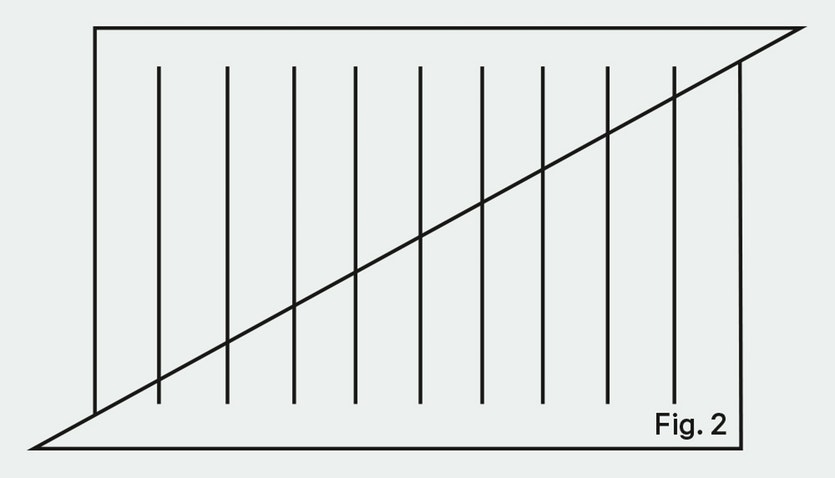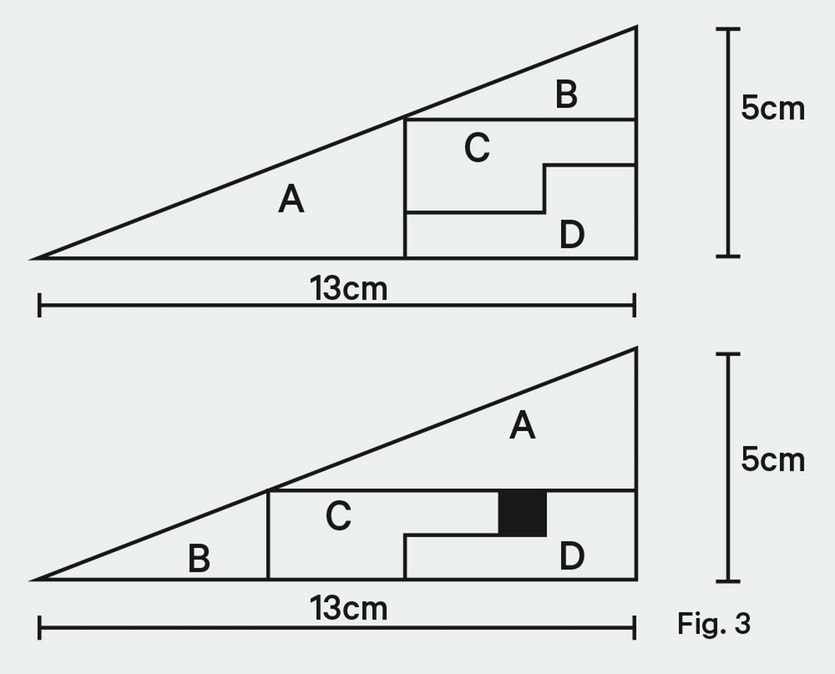The Geometry Vanishes

One of the best examples of using maths to create a terrific magic effect can be found in a class of mathemagic and puzzle-making known as “geometric vanishes”.
The first commercially popular puzzle that used this principle was Sam Lloyd’s “Get off the Earth”. Lloyd was a chess player, chess problem composer and puzzle-maker in the late 19th century. Part recreational mathematician and part con man, he took credit for a number of puzzles that he didn’t create. “Get off the Earth” was one he actually did invent and it sold upwards of 10 million copies from the late 1890s until his death in 1911.

The puzzle consists of a rotating outer ring around an inner dial. The combined ring and dial depicts 13 Chinese warriors. By rotating the ring, one of the warriors vanishes! The method, said the great Martin Gardner, is “the principle of concealed distribution.” Each warrior is cut in precisely the proper place to enable one to apparently vanish when the dial is turned. Of course, what really happens is that each of the 12 remaining warriors “absorbs” a miniscule slice of the one next to him and so grows a tiny bit larger.
A very simple demonstration of the principle can be seen by drawing 10 equal lines – each the same length and equidistant apart. (Fig. 1) The two on the end must also just touch the dotted line. Cut the paper in half diagonally along the dotted line. By sliding the lower piece of paper to the left one of the lines will vanish. (Fig. 2) Of course, what really happens is that the remaining lines get fractionally longer. I’ve often used this simple puzzle to demonstrate to children that geometry isn’t only about proofs – there is actually some fun to be had!

Another terrific geometric vanish was invented in the 1950s by magician Paul Curry – the “Curry Paradox”, or the “Curry Triangle” in its simplified form. The Triangle is easily constructed. Get a few sheets of graph paper with squares of about one centimetre. Draw the lines shown in Fig. 3. You will form a large triangle comprising two smaller ones and two oddly shaped pieces. Cut out the four shapes and you’ll find that by swapping triangles A and B and rearranging shapes C and D you can create a “hole” in the triangle the size of a single square. The large triangle appears to still take up the same amount of space – ½ (5x13) – but now a square is missing. Where did it go?
You’ll find that the feeling of a “missing” piece quite convincing. Unlike “Get off the Earth”, where a piece of a drawing vanishes, this feels more like an actual part of the paper somehow disappeared. Of course, the real answer is that the hypoteneuse of the larger triangle is altered by swapping pieces A and B. The larger “triangle” of four pieces isn’t really a triangle at all. Pieces A and B individually are triangles, but they have different slopes. Remember that slope is defined as “rise over run”. Piece A has a rise of three spaces over a run of eight spaces and B has a rise of two spaces over a run of five. These are just different enough to account for the additional space when rearranged.
What about a 3D model where pieces vanish or appear at the whim of the performer? Several magic effects exist where pieces of wood, plastic or granite move in or out of frames while the total area of the puzzle appears unchanged.
Winston Freer was a magician and mathematician famous for creating some of the most baffling effects of the 20th century. One was his “Tile Puzzle”, which consists of seven pieces of wood in a frame. Neither the frame nor the pieces change shape – they are solid. The seven pieces are dumped out and rearranged on the table. A space for an eighth piece appears. This is added and the frame is once more filled. The pieces are rearranged and again a space for a single small piece appears. This piece is added and the frame once again is shown to be full. Finally, the pieces are moved around for a third time and a tenth piece is placed in the frame. Nothing is added or taken away and the frame does not move or change shape. The method is entirely geometrical. A written description of Freer’s puzzle just doesn’t do it justice. Therefore, a video of me performing it can be found here: bit.ly/FreerPuzzle
Enjoy.
_______________________________________________________
This article appeared in Cosmos 76 - Spring 2017 under the headline "The geometry vanishes"
Jason England is a magician based in Las Vegas and a renowned authority on casino gambling and card handling.
